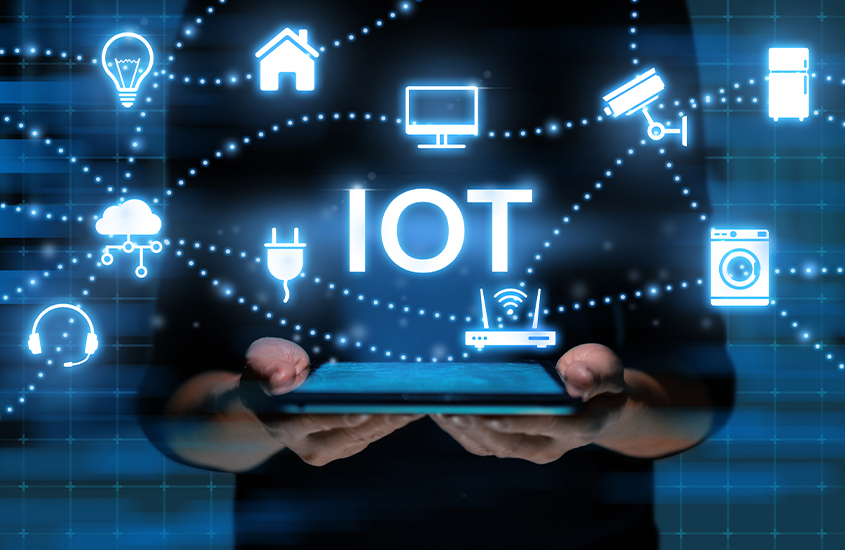
bởi Vinergy Vietnam | Th7 10, 2024 | Uncategorized
What is Internet of Things? This revolutionary concept is transforming the way we interact with our environment, particularly in the realm of energy management. As Vietnam rapidly embraces digital transformation, IoT technologies are playing an increasingly crucial role. Let’s explore the role of IoT in energy management and its applications in Vietnam.
What is the Internet of Things (IoT)?
The Internet of Things, commonly known as IoT, refers to the vast network of interconnected devices that communicate and exchange data via the internet. IoT devices are typically embedded with technology such as sensors and software. These “smart” devices span from household appliances like refrigerators and thermostats to sophisticated industrial equipment and autonomous vehicles.
At its core, IoT transforms ordinary items into responsive tools capable of gathering, analyzing, and acting on data without human intervention. Each device is equipped with unique identifiers and the ability to transfer data over a network automatically. For instance, a smart fitness tracker can monitor health metrics and provide personalized recommendations, while an industrial sensor can detect equipment malfunctions and trigger maintenance alerts.
In the business context, IoT technology serves as a powerful tool for monitoring and optimizing operations. Companies deploy IoT devices to track various environmental and operational factors, including temperature fluctuations, humidity levels, air quality metrics, energy usage patterns, and equipment performance. This continuous stream of real-time data allows for in-depth analysis, revealing valuable insights into operational efficiency and potential areas for improvement.
In essence, IoT represents a paradigm shift in how we interact with technology, opening up new possibilities for automation, data-driven decision making, and enhanced user experiences. The continuous exchange of data between devices and the cloud enables real-time insights and more intelligent, responsive systems, revolutionizing both consumer and industrial applications.
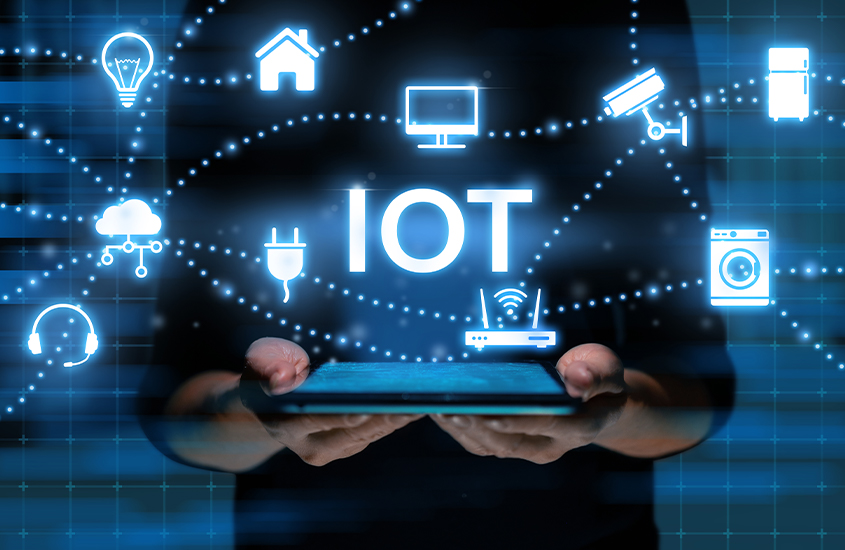
How does IoT work?
The Internet of Things operates through a sophisticated ecosystem of interconnected devices and systems. At its core, IoT functionality relies on the following key components:
1. Internet of Things platform
IoT platforms manage device connectivity, typically as software suites or cloud services. These platforms oversee hardware, software, processing capabilities, and application layers. They serve as the central hub for device management and data orchestration. IoT platforms enable seamless integration of various devices and provide tools for data analysis and visualization.
2. Sensors or devices
IoT sensors, often called smart sensors, convert real-world variables into interpretable data. Various types exist, such as temperature sensors detecting heat changes and motion sensors monitoring ultrasonic waves to trigger actions when interrupted.
3. Unique identifiers
Unique identifiers (UIDs) establish each device’s context within the larger network, enabling communication. These can be numeric or alphanumeric strings, like IP addresses, identifying either individual devices (instance identifiers) or device classes (type identifiers).
4. Internet connectivity
IoT devices communicate with one another through networks over the internet. They share sensor data by connecting to an IoT gateway, which functions as a central hub for data transmission. Before sharing, the data may be sent to an edge device for local analysis.
Different technologies like Wi-Fi, Bluetooth, cellular networks, or specialized IoT protocols enable this connectivity. The choice of connectivity method depends on factors such as power consumption, range, and data requirements.
5. Data Processing
Once data reaches the cloud, sophisticated software processes it using advanced analytics. Machine learning and artificial intelligence algorithms are applied to derive insights and inform decision-making. This processing stage transforms raw sensor data into actionable information. The system can identify patterns, predict trends, and generate alerts based on predefined rules or learned behaviors.
6. User Interface
IoT systems typically employ graphical user interfaces (UIs) to facilitate device management and control. These UIs serve as the primary point of interaction between users and their connected devices. For instance, a smartphone app might allow homeowners to effortlessly manage their smart home devices, from adjusting thermostat settings to monitoring security cameras.

7. Artificial intelligence (AI) and machine learning
AI and machine learning enhance the capabilities of IoT systems significantly. Natural Language Processing (NLP) improves user interactions with devices, as seen in virtual assistants like Amazon Alexa. Machine learning algorithms continuously refine the system’s analytical capabilities. These technologies enable IoT devices to learn from data patterns, make predictions, and autonomously adapt their behavior. As AI advances, IoT systems become increasingly intelligent and proactive in their operations.
Benefits of IoT for Businesses
The Internet of Things (IoT) is revolutionizing the business landscape, offering a multitude of advantages:
1. Reduced Costs
IoT devices help businesses streamline operations and increase profitability. From cybersecurity to workplace efficiency, these technologies are making a significant impact on companies’ bottom lines. Maintenance costs can be positively impacted when IoT devices with sensors are used to keep business equipment running at peak efficiency, catching problems before they escalate.
In manufacturing, predictive maintenance can reduce maintenance planning time by 20 – 50%, increase equipment uptime by 10 – 20%, and lower overall maintenance costs by 5 – 10%, a study by Deloitte found. Moreover, 83% of organizations report improved efficiency after introducing IoT technology, according to DataProt.
2. Higher Efficiency and Productivity
IoT boosts business efficiency by automating repetitive tasks and optimizing resource allocation. It can be used to enhance internal and external office communication, resulting in better productivity. In fact, according to a survey conducted by Harvard Business Review, 58% of companies report increased collaboration through IoT devices. Moreover, IoT also allows for optimization of office floor plans and mobilization of company resources for improved workflow.
3. Creating New Business Opportunities
IoT enables companies to collect actionable data, leading to new insights and business models. Advanced analytics, artificial intelligence, and smart utility grids make it easier for businesses to provide the value their customers are seeking. These technologies are not only creating new business models but also redefining traditional industries. For instance, 36% of companies are investigating new business directions thanks to IoT initiatives.

4. Improved Customer Experience
IoT technology has revolutionized customer engagement, with front-end interactions becoming a priority for organizations. Modern customers expect to interact with businesses through various devices, including phones, chatbots, and dedicated apps. Illustrating the shift in consumer perception of IoT, 30% of customers now express complete comfort with businesses using IoT for proactive service – a notable increase from just a few years prior. This shift has prompted businesses to use new technology combined with IoT to better serve their customers.
5. Increased Mobility and Agility
IoT enables employees to work from virtually any location, offering businesses increased flexibility. This technology supports the trend of hiring remote employees in “work from anywhere” positions, potentially reducing office lease costs. However, it also necessitates a strong focus on securing IoT endpoints to maintain communication safety.
43% of businesses implementing IoT strategies report enhanced business agility and improved operational processes. However, security remains a concern, with more 42% of businesses identifying difficulty in managing security as a primary challenge in IoT implementation.
The Role IoT in Energy Management
The Internet of Things (IoT) revolutionizes energy management in Vietnam, offering significant potential for improved efficiency and sustainability. IoT creates impact through applications such as smart metering, grid optimization, and building energy management. IoT-connected smart meters provide real-time data on energy consumption, allowing both consumers and utilities to monitor usage patterns. The collected information helps identify peak demand periods and opportunities for conservation, leading to more efficient energy use.
In the industrial sector, IoT sensors monitor equipment performance and energy consumption, enabling predictive maintenance and process optimization to reduce energy waste. The achieved results not only save costs but also contribute to Vietnam’s environmental protection efforts.
IoT also facilitates the integration of renewable energy sources such as solar and wind into the power grid. Providing real-time data on generation and demand allows for more efficient energy distribution, supporting the country’s sustainable development goals. Leveraging IoT in energy management helps Vietnam work towards its goals of energy security, efficiency, and sustainability while supporting economic growth and environmental protection.
At the forefront of this trend, Vinergy has developed the IoT SAAS energy monitoring & saving platform to monitor and optimize energy usage, delivering high efficiency and significant savings for businesses. Don’t hesitate to get in touch with us for further consultation!
Internet of Things Applications in Vietnam
The Vietnam Internet of Things (IoT) market is primarily driven by increasing demand for smart devices, expanding government initiatives, and growing need for data analytics. The IoT market in Vietnam is expected to show steady growth in the coming years.
According to Statista, the industry’s revenue is projected to reach $5,117 million by 2029, with a compound annual growth rate (CAGR) of 13.23% during the period 2024-2029. This growth reflects the increasing adoption of IoT technologies across various sectors in Vietnam.
IoT applications are being widely implemented in numerous fields throughout the country. Some notable examples of IoT applications in Vietnam include smart city projects such as the Ho Chi Minh City Security Operating Center ($10 million, 2021 – 2025), Da Nang Intelligent Operations Center ($7.5 million, 2020 – 2025), and Da Nang Intelligent Transportation System Project ($23 million, 2020 – 2025). Furthermore, IoT is being utilized in smart home enhancements, energy resource management, environmental monitoring, traffic flow regulation, and water quality control, among other diverse applications.
GSMA Intelligence reports indicate that the number of IoT devices in Vietnam is expected to surge from 21 million in 2018 to approximately 96 million by the end of 2025. The Ministry of Information and Communications states that the IoT market in Vietnam surpassed $2 billion in 2019 and is anticipated to reach $7 billion by 2025. The following are some typical IoT applications in Vietnam:
1. Banking Sector
Vietnam’s banking industry is embracing IoT technology to drive digital transformation. As banks complete their digital overhauls, they’re establishing a more resilient and flexible IT framework to support the growing demand for IoT-based solutions across the country. This enhanced infrastructure is crucial for processing the massive data streams produced by IoT devices and facilitating smooth inter-system connectivity. The ongoing expansion of fintech services and digital banking practices has further accelerated the adoption of IoT technologies in Vietnam’s financial sector.

2. Smart Wearables
The rise of smart wearables is propelling IoT expansion in Vietnam. These gadgets, equipped with sensors and connectivity, gather and relay data on users’ health, fitness, and daily routines. Their user-friendly nature and multi-functionality have made them increasingly popular among Vietnamese consumers. As adoption rates climb, so does the need for robust IoT infrastructure to handle data collection and analysis, driving wider IoT implementation across the country. Fitness trackers and smartwatches, offering features like heart rate monitoring and sleep analysis, are particularly in demand. This trend reflects a growing health awareness among Vietnamese consumers, opening up new avenues for IoT-powered health monitoring solutions.
3. Healthcare Sector
The healthcare industry is a key force behind Vietnam’s expanding IoT market. The integration of IoT and medical technologies is creating new opportunities to enhance patient care, optimize healthcare processes, and improve overall health outcomes. IoT-enabled medical devices are empowering healthcare providers to remotely monitor patients’ health status. This capability is especially beneficial for individuals managing chronic conditions and those in rural or isolated areas where access to medical facilities is limited.

4. Government Initiative
Vietnam’s leadership is taking decisive action to position the country for Industry 4.0, promoting IoT adoption while addressing workforce development challenges. The Ericsson regional president emphasizes 5G’s role in industrial digitalization and the company’s partnership with Vietnam in this endeavor. The Politburo’s 2019 Resolution No.52-NQ/TW outlines plans to accelerate Industry 4.0 adoption, showcasing the government’s strategic vision for sustainable economic growth through digital transformation.
Vietnam is prioritizing 5G development, recognizing that advanced mobile broadband networks are critical national infrastructure. These networks are seen as essential platforms for driving Industry 4.0 initiatives and supporting widespread digitalization across various sectors of the economy.
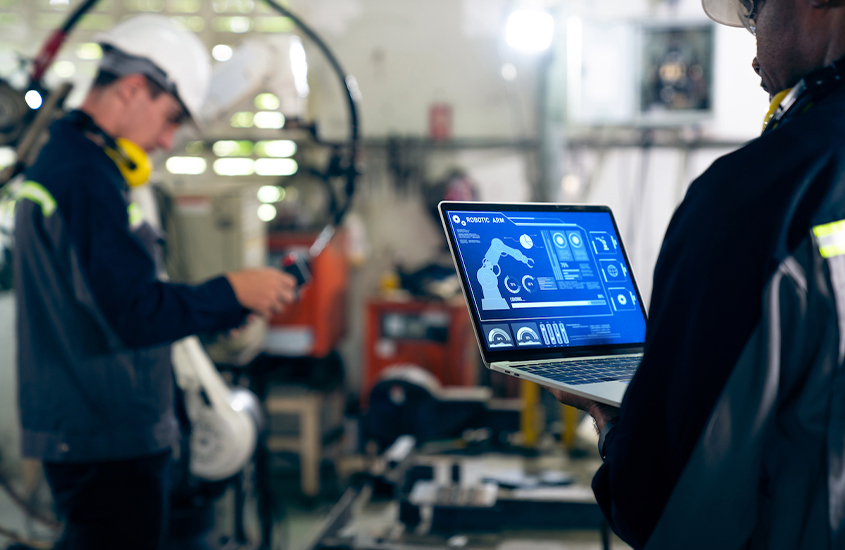
bởi Vinergy Vietnam | Th7 7, 2024 | Uncategorized
In Vietnam’s rapidly evolving business landscape, energy management is crucial for sustainable growth. However, many business owners often confuse two vital concepts: energy conservation and energy efficiency. Understanding what is the difference between energy conservation and energy efficiency is essential for implementing effective strategies in their businesses. Let’s explore these concepts in detail below!
What is Energy Conservation?
1. Definition
Energy conservation is the process of reducing the total amount of energy used by individuals, residential properties, businesses, or organizations. It involves making conscious efforts to use less energy and find alternatives to practices with high energy demands. The goal is to use energy more resourcefully and efficiently, minimizing waste without significantly impacting quality of life or productivity.
This concept encompasses a wide range of actions, from large-scale investments to small daily habits. On a broader scale, it can involve investing in renewable energy sources such as solar or wind power. On a more personal level, it includes simple actions like turning off lights in unoccupied rooms, using energy-efficient appliances, or adjusting thermostat settings. Energy conservation plays a crucial role in safeguarding our environment by minimizing the excessive consumption of fossil fuels, which daily contribute to substantial amounts of harmful carbon emissions. Moreover, it offers financial benefits by lowering energy expenses.
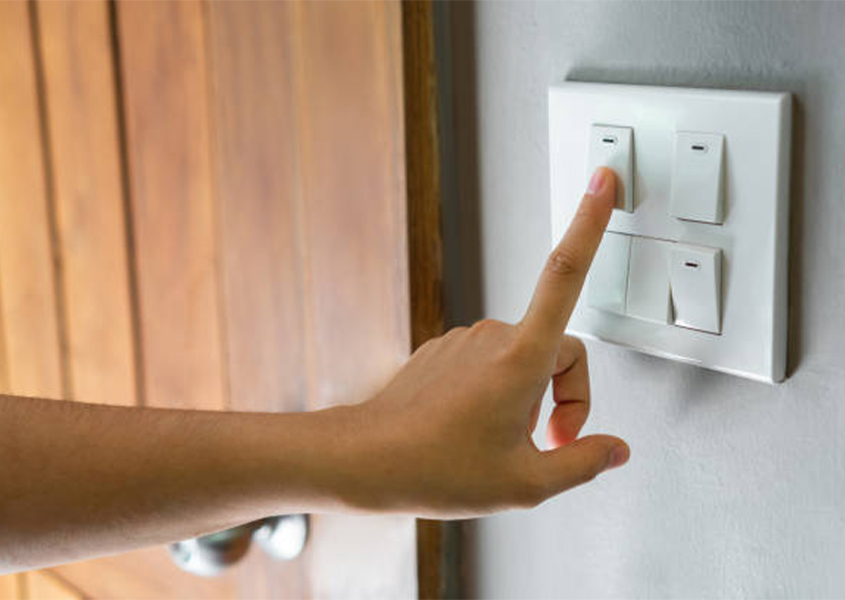
2. Benefits
Energy Conservation offers the following outstanding benefits:
- Immediate Cost Savings: Energy conservation measures typically require minimal investment and can be implemented quickly. As a result, users often see reduced electricity bills in the first month of application. The approach proves especially beneficial for businesses and households seeking rapid cost reductions.
- Easy Implementation: Energy conservation focuses on changing usage habits, without requiring in-depth technical knowledge. Measures such as turning off lights when not in use or adjusting air conditioning temperatures appropriately can be applied to anyone. Energy conservation has become an easily accessible and implementable option for all demographics.
- Raised Awareness: When implementing energy conservation measures, people become more conscious of their daily energy usage. A culture of energy saving develops within organizations and communities. Over time, increased awareness can lead to long-term behavioral changes and habits, bringing sustainable benefits.
- Flexibility: Energy conservation measures can be applied, adjusted, or stopped quickly according to needs. For example, during peak electricity usage seasons, more intensive saving measures can be implemented. Such flexibility allows users to react swiftly to changes in electricity prices or operating conditions.
- Reduced Grid Load: Energy conservation measures help alleviate pressure on the electrical system, especially during peak hours. The approach can help prevent overloads and power outages. For electricity providers, reducing peak demand can decrease the need for new power plant construction, saving costs and reducing environmental impact.
- Direct Environmental Protection: Through the immediate reduction of electricity consumption, energy conservation directly decreases emissions from electricity production. The effect positively impacts the environment instantly. Each kilowatt-hour saved equates to a significant reduction in carbon dioxide emissions, contributing to global climate change mitigation efforts.
- Suitable for All Scales: Energy conservation can be applied at all scales, from households to large businesses. Simple measures like turning off unused lights can be implemented by anyone. For larger organizations, energy conservation campaigns can be deployed company-wide, creating a significant impact. The versatility makes energy conservation a popular and accessible strategy for all entities.
What is Energy Efficiency?
1. Definition
Energy efficiency refers to the optimization of technologies, systems, and processes to achieve the same or better results while consuming less energy. It’s about enhancing the productivity of energy use, ensuring that we can accomplish more with fewer energy inputs. This concept focuses on refining and improving our methods of energy utilization, rather than simply reducing overall energy consumption.
Energy efficiency encompasses a wide range of technologies and practices, from using high-efficiency LED lighting that produces the same amount of light with less electricity, to installing smart thermostats that optimize heating and cooling systems. It also includes larger-scale initiatives like designing energy-efficient buildings or developing more fuel-efficient vehicles.
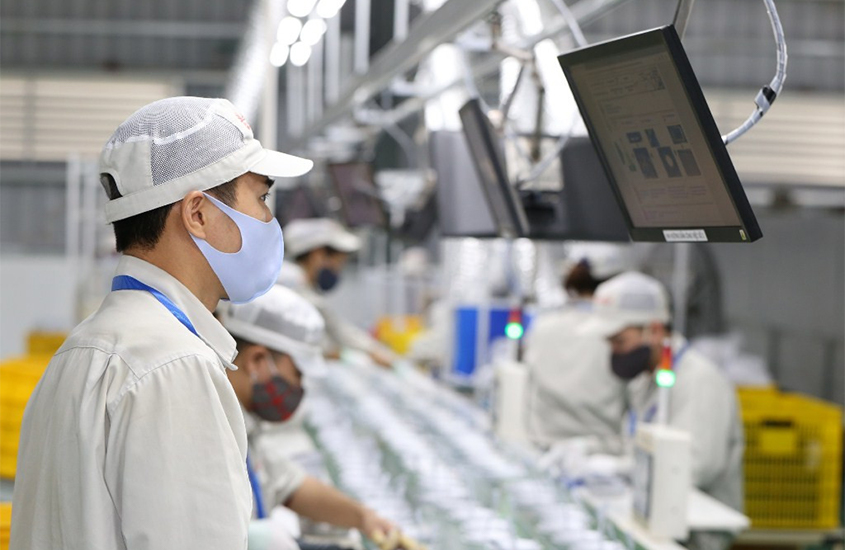
2. Benefits
Energy Efficiency provides the following significant benefits:
- Long-term Cost Savings: Energy efficiency measures can lead to substantial cost savings for individuals, businesses, and industries. Initial investments in energy-efficient technologies may be required; however, these often yield long-term savings through reduced energy bills. On a larger scale, enhanced energy efficiency boosts economic productivity and competitiveness via lower operational costs for businesses.
- Improved Performance and Productivity: Energy-efficient equipment and systems often perform better than their less efficient counterparts. For businesses, this can translate to increased productivity, better product quality, and improved operational efficiency.
- Enhanced Comfort: In buildings, energy-efficient systems like modern HVAC and lighting can provide better temperature control, air quality, and illumination. Occupants often experience more consistent temperatures, better air circulation, and lighting that reduces eye strain. These improvements can lead to increased comfort, potentially boosting productivity in workplaces and overall satisfaction in residential settings.
- Environmental Benefits: Improved energy efficiency results in decreased greenhouse gas emissions and other pollutants associated with energy production. Such reductions contribute to the fight against climate change and help improve air quality. The lower demand for energy generation also supports the conservation of natural resources.
- Technological Innovation: The pursuit of energy efficiency drives technological advancements and innovation. These efforts spark the development of new industries and create job opportunities in fields related to energy-efficient technologies and services.
- Compliance with Regulations: As governments worldwide implement stricter energy efficiency standards, adopting efficient technologies helps businesses stay ahead of regulatory requirements. It also positions companies favorably in industries where environmental compliance is increasingly scrutinized.
- Increased Property Value: Buildings and homes equipped with energy-efficient systems often command higher property values in the real estate market. These properties are more attractive to buyers or tenants due to lower operating costs and improved comfort. Energy efficiency certifications can serve as a selling point, potentially leading to faster sales or rentals at premium prices.

What is the Difference between Energy Conservation and Energy Efficiency?
1. Similarities
Energy conservation and energy efficiency are two interconnected strategies in sustainable energy management, sharing several key similarities:
- Both approaches aim to reduce energy use, resulting in reduced costs for businesses, and helping to preserve valuable resources.
- These practices contribute to grid stability by lowering overall energy demand, while also aligning with global efforts to combat climate change and promote sustainable development.
2. Differences
| Aspect |
Energy Conservation |
Energy Efficiency |
| Definition |
The practice of reducing or eliminating energy use |
The practice of using energy more effectively to achieve the same or better results |
| Focus |
Primarily on changing human behavior and habits |
Primarily on improving technology and design of systems or devices |
| Action |
Using less energy overall, often by foregoing or reducing certain activities |
Getting more output or performance from the same amount of energy input |
| Implementation |
Often involves simple changes that can be immediately adopted |
Usually requires planning, investment, and sometimes professional installation |
| Examples |
Turning off lights when not in use, adjusting thermostat settings |
Installing LED bulbs, upgrading to energy-efficient appliances |
| Initial cost |
Usually low or no cost to implement |
May require significant upfront investment, but often leads to long-term savings |
| Measurability |
Can be harder to quantify precisely, often measured in the overall reduction |
Easier to measure specific improvements in energy use per unit of output |
| Tính Linh Hoạt |
Can be quickly adjusted based on immediate needs or circumstances |
Less flexible once implemented, but provides consistent benefits |
Should Businesses Choose Energy Conservation or Energy Efficiency?
In the pursuit of optimal energy management, businesses should consider energy conservation and energy efficiency as complementary strategies rather than mutually exclusive options.
A strategic combination of both approaches often yields superior results. Energy conservation focuses on reducing overall energy use through behavioral changes, offering immediate, low-cost solutions. The approach swiftly cultivates a culture of energy awareness within an organization. Conversely, energy efficiency emphasizes technological improvements to extract more output from the same energy input, providing long-term, sustainable benefits, albeit often with higher initial costs. To effectively implement these strategies, many businesses are turning to advanced energy monitoring and saving solutions. At Vinergy, we provide a comprehensive solution that includes real-time energy monitoring, automation features, and data-driven insights. With our solutions, businesses can monitor, manage, and optimize energy usage centrally, leading to significant cost reductions and environmental benefits.
Implementing both strategies allows businesses to reap short-term savings from conservation efforts while investing in long-term efficiency improvements. Such a balanced approach enables companies to address energy use comprehensively, tackling both human and technological aspects of energy consumption. For example, a business might begin encouraging employees to turn off lights and equipment when not in use (conservation), while concurrently planning upgrades to LED lighting and energy-efficient HVAC systems (efficiency). Just because you installed an LED in the light fixture on your front porch doesn’t mean you should leave it on 24/7.
Ultimately, the decision between energy conservation and energy efficiency isn’t an either-or proposition. Businesses embracing both approaches position themselves to achieve significant energy savings, reduce their environmental impact, and potentially gain a competitive edge in an increasingly sustainability-focused market. The key to success lies in developing a comprehensive energy management plan that harnesses the strengths of both conservation and efficiency strategies.
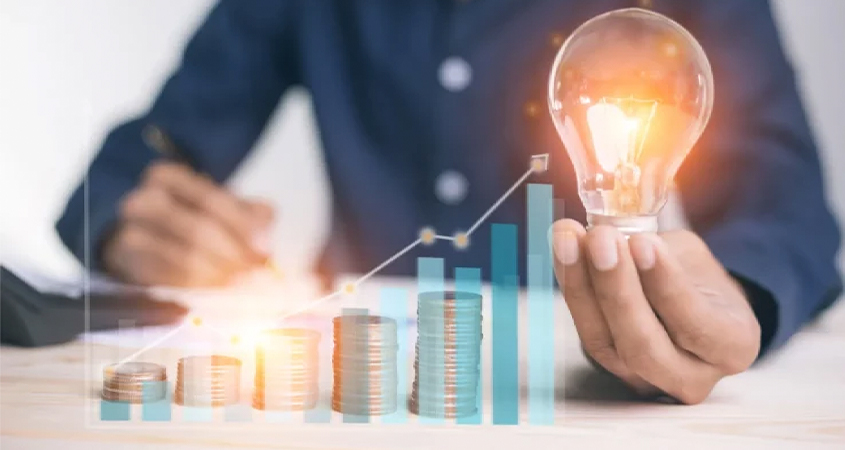
bởi Vinergy Vietnam | Th7 7, 2024 | Uncategorized
Energy audits for businesses are a powerful yet underutilized tool in Vietnam’s competitive market. If you’ve ever questioned whether your enterprise is operating at peak efficiency, an energy audit could be the key to unlocking substantial savings and improved performance. Let’s explore the process and benefits of energy audits in Vietnam in the article below!
What is an Energy Audit?
An energy audit is a systematic assessment of energy use within a building or facility. It aims to identify how and where energy is being consumed, detect areas of energy waste or inefficiency, and recommend cost-effective measures to improve energy efficiency.
The ultimate goal is to identify consumption leakages, reduce energy consumption, lower utility costs, and decrease the building’s environmental impact. Energy audits can be performed on residential, commercial, or industrial properties, providing valuable insights for property owners and managers to make informed decisions about energy-saving or efficiency improvements.
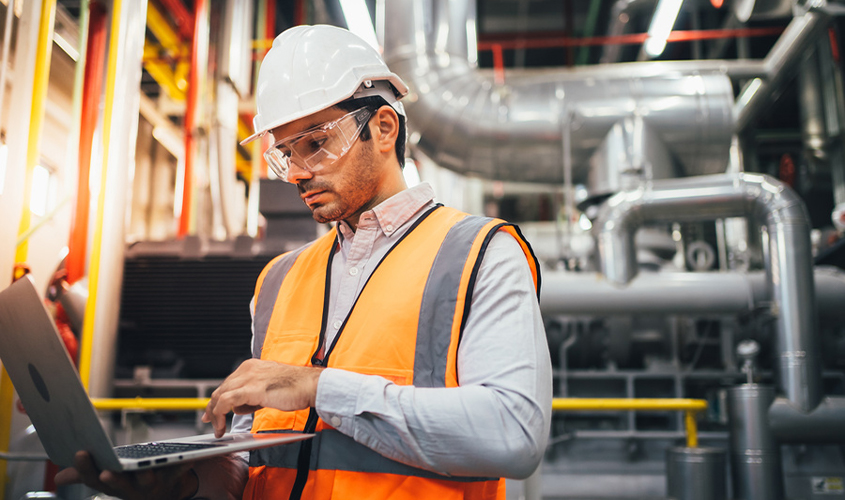
Types of Energy Audits
For businesses in Vietnam that own their buildings, professional energy audits can be a valuable tool for improving energy efficiency. According to Energy Star, there are several types of energy audits, each offering different levels of detail in surveying your property:
- Level I – Walk-Through Analysis focuses on low and no-cost energy conservation measures and provides a list of higher-cost energy conservation opportunities. This type of audit typically results in a report detailing potential energy and cost savings from specific efficiency improvements. It’s suitable for businesses looking for quick, easily implementable solutions to reduce energy consumption and costs.
- Level II – Energy Survey and Analysis includes more detailed energy calculations and financial analysis of proposed efficiency measures. It utilizes life cycle analysis to better illustrate the long-term financial benefits of energy efficiency upgrades. This audit provides a comprehensive list of energy conservation/efficiency measures, estimates of energy and cost savings for each measure, and cost estimates for implementing each measure. It also includes recommendations for necessary changes to operations and maintenance procedures. Level II audits are ideal for businesses ready to make more significant investments in energy efficiency.
- 3. Level III – Detailed Analysis of Capital-Intensive Modifications builds upon the previous levels with a focus on specific, complex energy conservation/efficiency measures. This may involve the refinement of energy models or more extensive data collection and analysis. Level III audits are typically used for large-scale or high-cost energy efficiency projects and are suitable for businesses planning major renovations or considering substantial energy system overhauls.

The Energy Audit Process
The energy audit process applied in Vietnam is typically flexible and adaptable, varying depending on the scope of the proposed audit, as well as the size and type of equipment to be audited. The audit follows these steps:
- Step 1: The audit team develops a detailed plan, establishing audit objectives, dividing the facility into functional areas or cost centers, selecting team members, assigning responsibilities, and listing equipment for inspection.
- Step 2: Auditors conduct an initial walkthrough of the facility, observing production lines and equipment in operation to gain a general understanding of energy consumption patterns.
- Step 3: Basic production and energy consumption data is gathered from various departments or cost centers. Standard forms and worksheets are used to collect information such as utility bills, production records, and annual energy consumption figures.
- Step 4: The team performs tests to collect additional data on equipment performance and specific production areas. In some cases, this may involve setting up measurement points or monitoring stations.
- Step 5: Auditors analyze the collected data to determine energy balances and calculate efficiency metrics for various systems and processes.
- Step 6: The audit team identifies areas where energy management practices can be improved and assesses the potential for energy savings.
- Step 7: Auditors evaluate current operational and maintenance procedures, identifying potential energy-saving measures and assigning responsibilities for implementation.
- Step 8: The team identifies and evaluates low-cost energy-saving measures, estimating implementation costs and potential energy savings. This step includes planning for financial investments and clearly defining responsibilities and timelines.
- Step 9: Larger energy-saving projects are assessed, with costs and potential savings calculated. Detailed implementation plans are prepared for solutions with acceptable payback periods.
- Step 10: A comprehensive report is compiled for facility management, summarizing findings and recommendations. This includes all collected data, analysis methods used, and suggestions for energy efficiency improvements based on the audit results. The report also outlines a clear action plan for implementation.
Benefits of Energy Audits for Businesses in Vietnam
1. Reduced Energy Expenses
The primary advantage of energy audits is significant cost savings. Energy audits help Vietnamese businesses identify and eliminate energy waste, leading to significant cost savings. This is particularly important in Vietnam, where energy demand is rapidly increasing. These audits can reveal opportunities for optimizing equipment usage and upgrading to energy-efficient technologies.
While specific savings can vary greatly depending on the business and measures implemented, many companies report significant reductions in energy consumption after conducting audits and following recommendations.

2. Identify Equipment Problems
Audits can uncover issues with equipment performance or maintenance that may be causing energy waste. Moreover, energy audits often reveal outdated or inefficient equipment that may be consuming excessive energy. Early detection of these problems allows for timely repairs or replacements, preventing costly breakdowns and improving overall operational efficiency.
Auditors can also detect dangerous health risks such as carbon monoxide emitted from malfunctioning equipment. Regular energy audits help identify potential health hazards, allowing businesses to address these issues promptly and ensure staff safety.
3. Personalized Recommendations for Your Business
Energy audits provide tailored suggestions based on specific business operations, facilities, and energy usage patterns. According to the Vietnam National Energy Efficiency Programme (VNEEP), energy audits in industrial sectors have led to significant energy savings.
To achieve this, auditors consider factors such as building layout, equipment usage, and operational patterns. Recommendations are prioritized based on potential impact and feasibility for implementation. As a result, businesses receive a roadmap for energy efficiency improvements aligned with their goals and budget. Ultimately, custom strategies ensure optimal results and return on investment for energy-saving initiatives.
4. Increased Property Value
Implementing energy-efficient upgrades based on energy audit recommendations can significantly enhance your property’s value. Investments in technologies like solar panels, high-efficiency LED lighting, and weatherization not only reduce energy consumption but also boost market appeal.
This “green” approach aligns with current real estate trends, as evidenced by studies on ENERGY STAR certified buildings. Such properties enjoy notable financial benefits, including approximately 3% higher rental rates, improved occupancy levels, and a substantial 16% premium in selling price. Therefore, allocating a budget towards energy efficiency improvements is a strategic decision that can yield both immediate savings and long-term financial gains in the competitive real estate market.
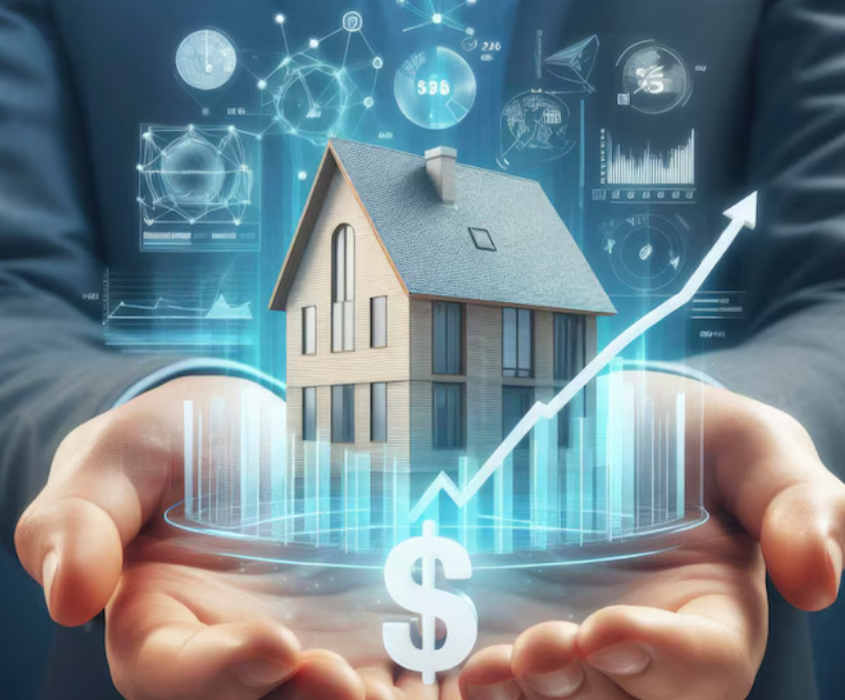
5. Longer Equipment Lifespan
Upgrading equipment based on energy audit recommendations offers multiple benefits for businesses. Modern, energy-efficient units not only reduce energy costs but also tend to have longer lifespans due to their optimized performance. These newer models operate more efficiently, reducing strain and wear compared to older, less efficient equipment.
Consequently, Vietnamese businesses can expect extended equipment durability, leading to fewer replacements and lower long-term capital expenditures. This approach maximizes return on investment in machinery and technology while enhancing operational stability.
Challenges and Considerations in Implementing Energy Audits
Implementing energy audits in Vietnamese businesses faces numerous significant challenges. One of the main barriers is the lack of awareness about the importance and benefits of energy auditing. Many businesses, especially small and medium-sized enterprises, often view this as an unnecessary expense rather than a long-term investment. Additionally, the shortage of qualified and experienced energy auditors in Vietnam is also a major obstacle. This can lead to inaccurate or incomplete audit results, reducing the effectiveness of the process.
Another challenge is the complexity of the energy auditing process, which requires close cooperation between various departments within the business. Collecting accurate and comprehensive data on energy consumption can be difficult, especially when many businesses lack efficient energy monitoring systems. Moreover, implementing recommendations from energy audit reports requires financial investment and changes in operational processes, which many businesses may be reluctant to undertake, particularly in challenging economic contexts.
How can businesses get started with an energy audit?
Starting your business’s energy optimization journey is no longer an overly complex task. In Vietnam, companies like Vinergy offer professional energy auditing and monitoring services, making it easy for businesses to begin this process. To get started, simply get in touch with us to schedule a preliminary assessment.
Vinergy will help your business implement the energy audit process, from collecting energy data and conducting on-site inspections to analyzing and providing specific recommendations. With the support of our experienced professionals, your business will quickly realize the significant benefits of optimizing energy use, not only reducing costs but also improving overall operational efficiency.
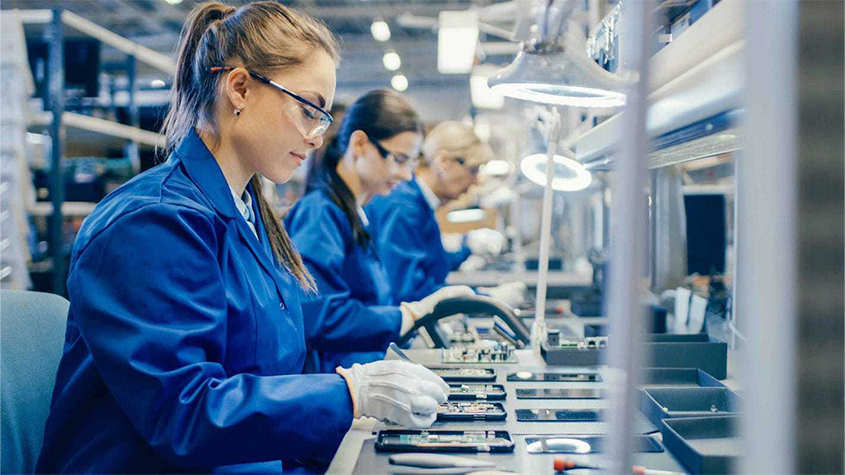
bởi Vinergy Vietnam | Th6 23, 2024 | Uncategorized
Vietnam’s manufacturing boom has led to soaring energy demands, causing environmental strain. Enhancing energy efficiency in manufacturing has become crucial to reduce costs, boost productivity, increase competitiveness, and minimize the environmental impact. Explore the importance of energy efficiency in manufacturing in detail through the blog below!
Energy – The Key Determinant of Manufacturing Success
Energy fuels every facet of manufacturing operations, acting as the indispensable driving force behind machines, processes, and systems transforming raw materials into finished goods. Reliable and affordable energy access determines factories’ production efficiency, product quality standards, and overall competitiveness. In our modern energy-intensive industrial landscape, businesses prioritizing energy efficiency enjoy significant competitive advantages.
According to the International Energy Agency (IEA), energy efficiency measures could provide over 40% of the emissions reductions required to reach global climate goals by 2040. Optimizing energy consumption allows manufacturers to curb operational costs, it also minimizes their carbon footprint and ensures sustainable growth trajectories resilient to ever-evolving market pressures.
Conversely, inefficient practices burden companies with soaring overhead expenses, increased greenhouse gas emissions (the industrial sector accounted for 24.2% of global emissions in 2019 as per the EPA), and diminished adaptability. Energy efficiency transcends environmental stewardship; it constitutes a strategic cornerstone determining long-term manufacturing success and profitability.
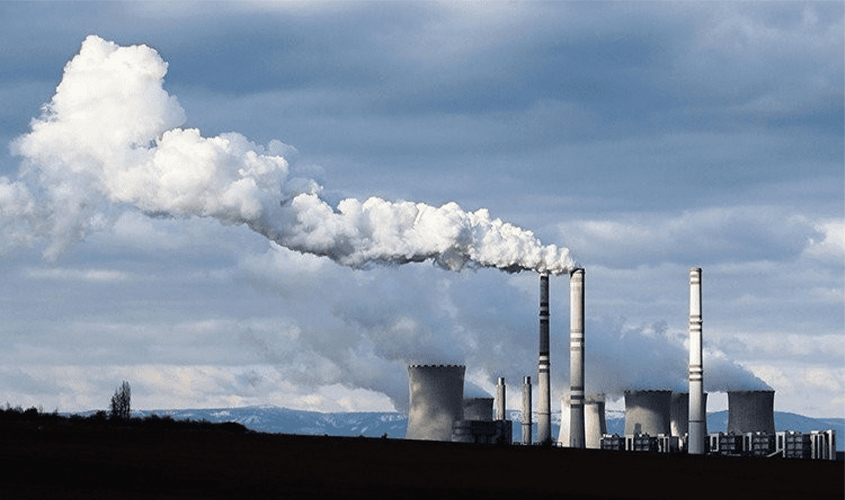
Vietnam Facing an ‘Energy Thirst’ in Manufacturing
Vietnam’s rapidly growing manufacturing sector is facing an increasing demand for energy, fueled by the country’s economic growth and industrialization efforts. According to a report by the Vietnam Energy Partnership Group (VEPG), the manufacturing industry accounted for nearly 47% of the country’s total energy consumption in 2021.
The surge in energy demand is driven by several factors, including the expansion of existing industries and the establishment of new manufacturing facilities, particularly in sectors like electronics, textiles, and automotive. Vietnam’s energy consumption in the manufacturing sector has been growing at an annual rate of around 8% over the past decade, according to the Vietnam Energy Outlook Report 2021.
This rapid growth in energy consumption poses significant challenges for Vietnam in terms of energy security, affordability, and environmental sustainability. To address this “energy thirst,” the Vietnamese government has been promoting energy efficiency initiatives and investing in renewable energy sources. Prime Minister Pham Minh Chinh has issued a directive to save electricity in 2023 – 2025 and subsequent years, aiming to curtail the country’s overall energy consumption by 8 – 10 percent and reduce power transmission losses to 6 percent by the year 2023.
Moreover, the project “Promoting energy saving in industries in Vietnam” is implemented to encourage the judicious and efficient utilization of energy resources within the industrial sector of Vietnam. Concurrently, it endeavors to make a meaningful contribution towards attaining the nation’s overarching goals for energy conservation. Enhancing energy efficiency in manufacturing processes and adopting clean energy technologies are crucial steps for Vietnam to achieve its targets of reducing greenhouse gas emissions and transitioning towards a low-carbon economy.
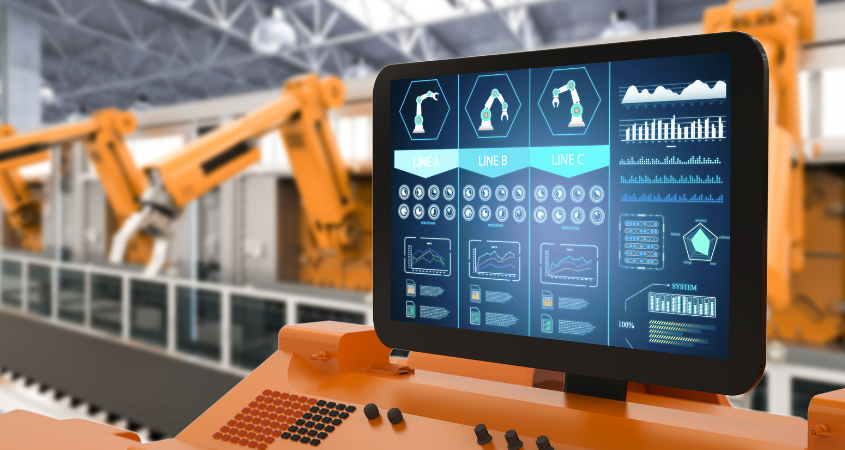
The Importance of Energy Efficiency in Manufacturing in Vietnam
The importance of enhancing energy efficiency cannot be understated. Data from the International Energy Agency highlights that measures to boost energy efficiency could account for a staggering 47% of the potential reductions in carbon dioxide emissions related to energy use by the year 2030. Energy efficiency is crucial in manufacturing for several reasons:
1. Reducing operational costs
Implementing energy-saving technologies and equipment will enable businesses to significantly reduce input costs for their manufacturing processes. For instance, replacing outdated equipment and motors with newer, more efficient models will help consume less energy while still achieving equivalent output capacity.
Additionally, improving heating, ventilation, and air conditioning systems also contributes substantially to conserving energy consumption. Furthermore, optimizing production processes by eliminating unnecessary steps is also an effective measure to reduce energy input requirements.
2. Increasing productivity
Efficient energy utilization facilitates seamless operation of production lines without interruptions caused by energy shortages. This continuous flow translates into heightened output and elevated labor productivity for the company. Furthermore, automation and digital technologies streamline processes, optimizing energy utilization and amplifying productivity levels. When implemented effectively, the goal is for performance enhancements to drive productivity gains, ultimately eliminating unnecessary expenditures.

3. Enhancing competitiveness and attracting investment
Globally, investors and supply chains are increasingly favoring partnerships with enterprises that adhere to sustainable development principles. Moreover, it is necessary to meet the UN’s CO2 emission reduction targets, avoiding financial penalties.
Manufacturers adopting energy efficiency solutions are perceived as eco-friendly entities, reinforcing their competitive edge and attracting foreign investment inflows. Their products also gain a competitive advantage in domestic and international markets by meeting the rising green consumption trends exhibited by consumers.
4. Reducing greenhouse gas emissions and environmental impact
The deployment of energy efficiency initiatives, such as investing in new energy-saving technologies, equipment, and process optimization, significantly reduces greenhouse gas emissions originating from the industrial sector – currently a major polluter. Industry-related emissions constitute 29 percent of CO2 emissions in Vietnam, according to Climate Transparency. This emissions reduction mitigates climate change impacts while diminishing the sector’s detrimental effects on ecosystems and community health.
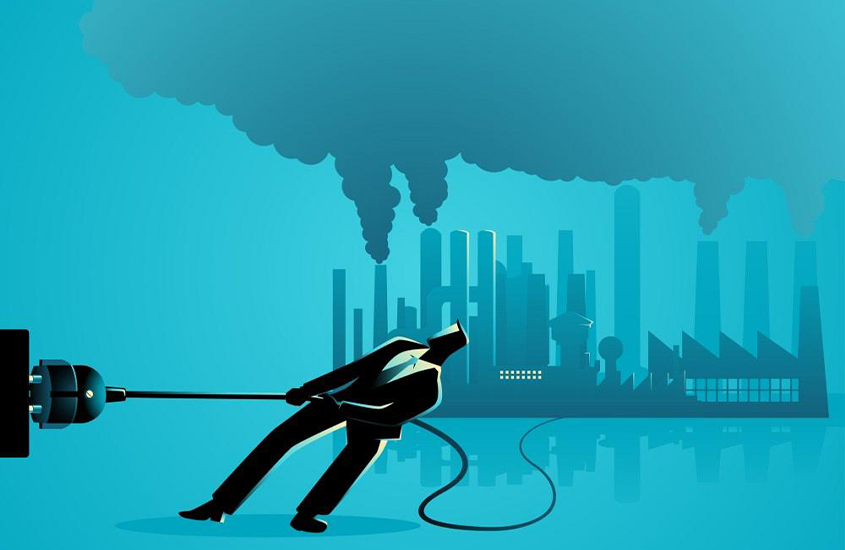
5. Meeting rising energy demands
Vietnam’s rapid economic expansion, coupled with the proliferation of industrial parks and supply chains, continues fueling an escalating appetite for energy resources. Enhanced energy efficiency plays a pivotal role in satisfying these surging demands while optimizing the use of finite energy resources, contributing to national energy security, and enabling uninterrupted business operations for enterprises.
6. Social commitment and corporate image
Energy efficiency initiatives exemplify a company’s commitment to environmental and social responsibility. This positive stance promotes an active corporate image within communities and elevates consumer appeal.
According to the Ministry of Industry and Trade, the demand for green products in Vietnam has been growing at an average rate of 15% annually between 2021 and 2023. A remarkable 72% of Vietnamese consumers express a willingness to pay a premium for eco-friendly products, reflecting the rising awareness and concern for environmental protection among the populace. Consequently, energy efficiency initiatives not only improve operational efficiency but also augment brand equity and convey a constructive message to society.
How Businesses Can Improve Energy Efficiency in Manufacturing?
The first and crucial step for businesses to improve energy efficiency in manufacturing is to conduct energy audits. Regular energy audits help identify areas of high energy consumption and provide recommendations for energy-saving measures. This initial assessment lays the foundation for implementing targeted strategies to optimize energy usage. Investing in energy-efficient technologies, such as upgrading machinery, equipment, and production processes, as well as utilizing renewable energy sources like solar and wind power, can significantly reduce energy consumption.
Optimizing production processes is another effective approach. Companies can achieve substantial energy savings through the elimination of unnecessary steps, implementation of lean manufacturing principles, and strategic use of automation. Training and raising awareness among employees through energy-saving programs and fostering an energy-conscious culture within the organization can also encourage behavior change and idea-sharing, leading to improved energy efficiency.
Additionally, businesses can leverage smart energy solutions offered by companies like Vinergy. Vinergy’s cutting-edge solutions offer a comprehensive approach to energy management, combining real-time energy monitoring, automation capabilities, and actionable insights. With Vinergy, you can effortlessly track, control, and optimize your manufacturing’s energy consumption from a single platform, unlocking substantial cost savings and minimizing your environmental footprint. To explore the boundless possibilities of Vinergy’s energy-saving solutions, get in touch with us for a consultation with our experts today!
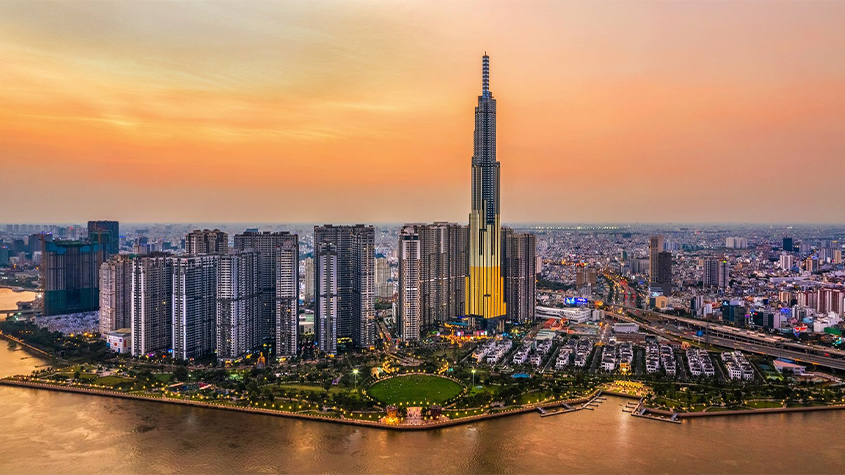
bởi Vinergy Vietnam | Th6 22, 2024 | Uncategorized
Improving energy efficiency in commercial buildings has become an urgent issue in Vietnam with energy consumption demand rising rapidly. As energy costs account for a significant portion of operational expenses, implementing effective energy-saving solutions will bring considerable economic benefits. Let’s explore 10 ways to improve energy efficiency in commercial buildings in Vietnam in the article below!
State of Energy Waste in Commercial Buildings in Vietnam
The operation of commercial buildings is consuming a large amount of energy, leading to an increase in energy costs in particular and operational costs in general. According to data from Vietnam Electricity (EVN), in recent years, the energy consumption in high-rise buildings in Vietnam accounts for about 35 – 40% of the country’s total energy consumption, higher than the energy consumption of factories. Of which, air conditioning systems account for 40 – 60% of a building’s total energy consumption, lighting systems use about 15 – 20%, office equipment consumes 10 – 15%, and the remaining portion is used by other ancillary equipment. Energy waste not only creates a cost burden but also impacts the environment and energy supply.
According to a United Nations report, CO2 emissions from inefficient energy consumption in commercial buildings reached an unprecedented level of around 10 GtCO2 in 2022, an increase of about 5% compared to 2020 and 2% higher than the previous peak in 2019. This shows the significant impact of inefficient energy consumption in commercial buildings on the global environment.
However, buildings still have great potential for energy savings, especially new buildings constructed according to new energy standards or buildings that have been upgraded to optimize their systems after a period of operation. With the construction of commercial and high-rise residential projects increasing by 6 – 7% annually according to EVN, implementing energy efficiency solutions is crucial to control costs, reduce environmental impact, and ensure sustainable development.

The Importance of Improving Energy Efficiency in Commercial Buildings
Improving energy efficiency plays a crucial role in reducing operational costs and environmental impact of commercial buildings. Decreasing energy consumption allows buildings to achieve significant savings on electricity, fuel, and other utility costs, directly impacting profitability and business efficiency in a positive way. According to the U.S. Environmental Protection Agency, energy-efficient buildings typically use 25-30% less energy than conventional buildings.
Efficient energy use also helps reduce carbon emissions and other pollutants, aligning with sustainable and environmentally friendly development trends. Buildings can enhance their competitive advantage and comply with increasingly stringent environmental regulations by being energy-efficient. Many countries now offer tax incentives or other financial benefits for green, energy-efficient buildings. For example, the United States offers tax deductions for energy-efficient commercial buildings through the Energy Policy Act. Similarly, Canada provides financial incentives like grants and rebates for green buildings through programs like the Green Municipal Fund.
In particular, under The Vietnam Scaling Up Energy Efficiency Project (VSUEE) approved in 2019, industrial enterprises (IEs) and energy service companies (ESCOs) participating in energy efficiency sub-projects will receive a 50% credit guarantee for participating financial institutions (PFIs) in providing loans to the industry. At the same time, it provides funding to build capacity for private enterprises to develop and implement energy efficiency projects.
Moreover, energy-efficient buildings provide a more comfortable and healthy working environment for occupants. Temperature and air quality are better controlled, helping minimize adverse health impacts like headaches and fatigue. Improving indoor environmental quality has been linked to increased employee productivity and performance.
Therefore, developing and implementing solutions to improve energy efficiency should be considered an essential part of the sustainable development and long-term business strategy for investors as well as commercial building management units, especially in Vietnam where energy demand is rapidly increasing.
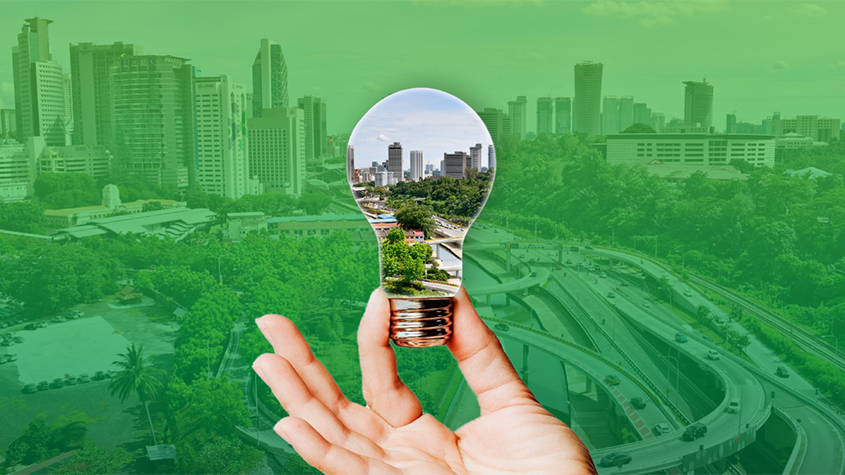
10 Ways to improve Energy Efficiency in Commercial Buildings in Vietnam
1. Conduct Energy Audits
The U.S. Environmental Protection Agency (EPA) states that around 30% of the energy consumed in commercial buildings is wasted due to various inefficiencies, like faulty electrical wires, incandescent light fixtures, refrigerant leaks, and more. According to data from the Ministry of Construction of Vietnam, approximately 40% of the total energy consumption in an urban area is energy supplied to construction projects, with high-rise buildings having the highest energy consumption index. So, the first step towards improving energy efficiency is to understand where and how energy is being consumed in a building. Professional energy audits can identify areas of inefficiency and provide recommendations for improvement.
At Vinergy, we offer a comprehensive Energy Audit solution to assist enterprises in identifying inefficiencies and unlocking opportunities to enhance energy performance within their commercial buildings. A key capability is mapping power distribution channels and identifying equipment consumption clusters to provide an installation diagram for the strategic placement of monitoring assets. With in-depth analysis of energy usage patterns and building systems, our audits can pinpoint areas with potential for savings and recommend cost-effective efficiency measures tailored to each facility’s unique needs.
2. Upgrade Lighting Systems
Lighting fixtures are an essential necessity in commercial buildings, but they can also contribute to significant energy waste. For building owners and occupants, replacing inefficient incandescent bulbs with LED lights presents an immediate and cost-effective solution to reduce energy consumption and save on utility bills. According to a study by the U.S. Department of Energy, LED lights use at least 75% less energy than conventional incandescent bulbs.
Beyond their energy-saving capabilities, LED lights offer additional advantages. They emit considerably less heat than incandescent bulbs, which can help lower air conditioning costs and reduce cooling loads within the building. LED lights also provide brighter, more uniform illumination, contributing to improved occupant comfort and potentially boosting employee productivity.

3. Optimize HVAC Systems
According to statistics from the Ho Chi Minh City Energy Conservation Center, for office buildings serving as administrative headquarters, the equipment that consumes the most energy is air conditioning, accounting for over 70% of total energy use. Therefore, it can be said that HVAC is one of the highest energy-consuming areas in a building.
According to the International Energy Agency (IEA), optimizing the HVAC system can help save 20% to 40% of the energy used for cooling and heating. Optimizing and properly maintaining the system can lead to significant energy and cost savings, for example by installing high-efficiency heating and cooling systems, such as condensing boilers, heat pumps, or variable refrigerant flow (VRF) systems.
4. Improve Insulation
Poor insulation leads to increased demand for HVAC usage to maintain indoor temperatures. According to research by the Vietnam Energy Institute, proper insulation for walls and roofs can help reduce the need for air conditioning by 20% to 30%, resulting in significant energy savings. The Ministry of Construction estimates that improved insulation measures can help reduce a building’s total energy costs by 5% to 10%. Insulating materials that can help save heating and cooling costs include house wraps and sealed coating. Insulation work in existing buildings is not just for walls; windows, doors, and roofs also need to be sealed to prevent air leakage.
5. Utilize Daylight
Utilizing natural daylight from the sun through proper window design and placement helps reduce the need for artificial lighting and saves energy. Studies have shown that increasing natural light can decrease the demand for artificial lighting by around 16 – 20% (Velux, 2018). According to the Vietnam Green Building Council (VGBC), in most constructions that incorporate natural daylighting systems, the overall energy savings range from 15 – 40%. Furthermore, office high-rises have recorded energy savings from using natural light ranging from 20 – 60%.
6. Buy Energy Certified Equipment
For owners of commercial buildings, transitioning to energy-efficient systems presents an opportunity to dramatically reduce heating and cooling expenditures. The Energy Star certification program, endorsed by the Department of Energy, serves as a reliable guide for identifying trusted, energy-saving equipment and appliances on the market. Spanning from computers to HVAC systems, Energy Star certified products consume between 30% and 65% less energy compared to their non-certified counterparts.
7. Pursue Green Building Certifications
Green building certification programs like LEED and EDGE have stringent standards for energy efficiency and minimizing environmental impact. According to the U.S. Green Building Council, LEED-certified projects divert over 80 million tons of waste away from landfills. The U.S. General Services Administration states that LEED Gold buildings in their portfolio consume 25% less energy and produce 34% fewer greenhouse gas emissions compared to the national average.
While achieving compliance can increase upfront costs for construction and renovations, LEED offers excellent opportunities for long-term cost savings. Utilizing LEED’s energy benchmarks for mechanical systems and energy conservation allows you to recoup your investment within just a few years through reduced utility expenditures.
8. Utilize Renewable Energy Sources
Integrating renewable energy sources such as solar and wind power into a building’s system is an effective solution to reduce dependence on the national grid and traditional fossil fuels. According to energy experts, installing rooftop solar systems can meet a considerable portion of the energy needs of a commercial building. The Vietnam Energy Institute also estimates that small-scale wind turbines can provide a certain amount of electricity when wind conditions are favorable.
In addition to the positive environmental impact of reducing carbon emissions and air pollutants, using renewable energy helps create a sustainable, safe, and reliable energy source for the building’s operations, while also reducing long-term energy costs.
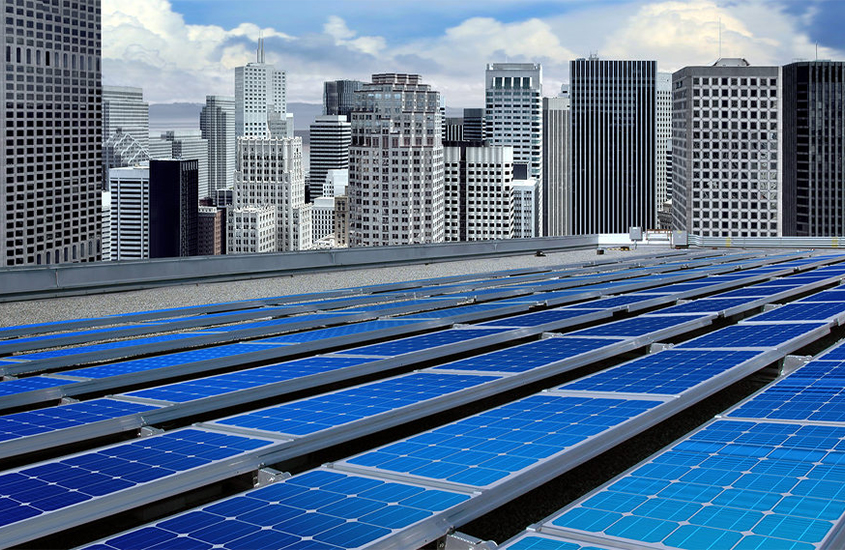
9. Regularly Maintain and Upgrade equipment
Regular maintenance and upgrading of equipment is absolutely necessary. Periodic maintenance of equipment such as air conditioning systems, generators, and lighting fixtures helps ensure they operate efficiently, avoiding energy waste. According to the report “Improving Energy Efficiency in Commercial Buildings in Vietnam” by the Vietnam Energy Institute in 2021, periodic maintenance of air conditioning systems can help save 10 – 15% of energy consumption.
10. Implement Energy Monitoring and Management Systems
For commercial buildings, controlling and optimizing energy usage is a crucial issue to save operational costs while contributing to environmental protection. Implementing an Energy Monitoring System(EMS) is a comprehensive solution that allows you to monitor, control, and optimize energy usage throughout the entire building through automation and intelligent control.
With the support of Vinergy, you will enjoy practical benefits such as the installation of sensors, meters, and real-time energy data analysis software; automated control of air conditioning systems with a team of experts providing strategic consultation on energy-saving optimization; and periodic evaluations of energy efficiency. Contact Vinergy now for a free consultation on the most suitable solution for your building!





















